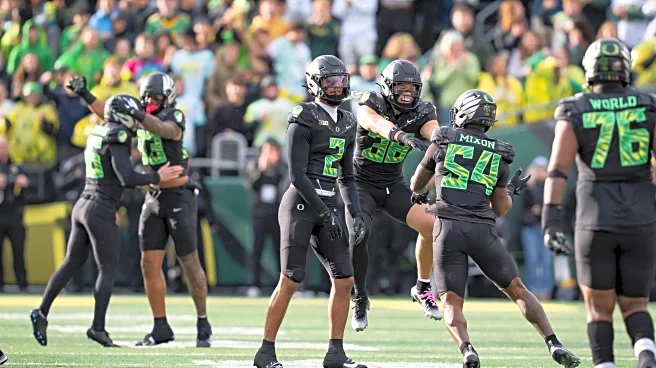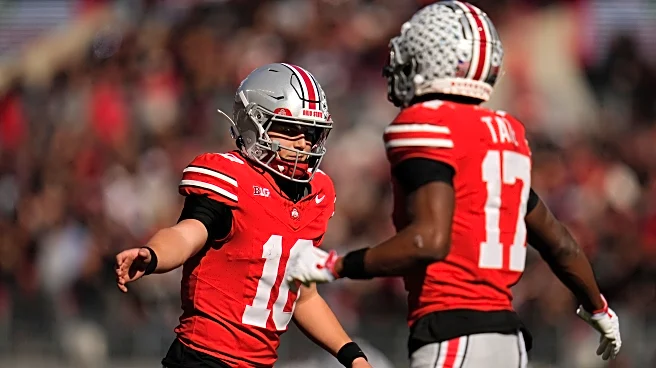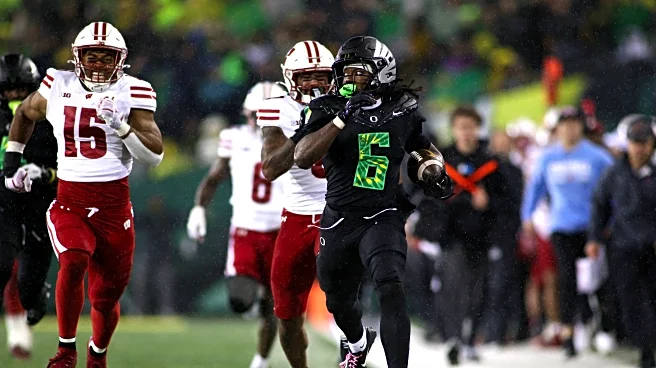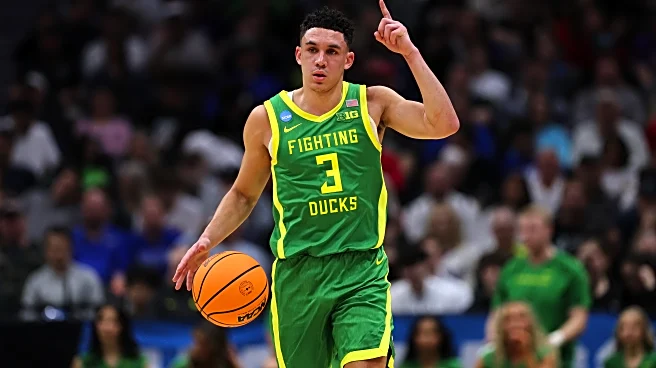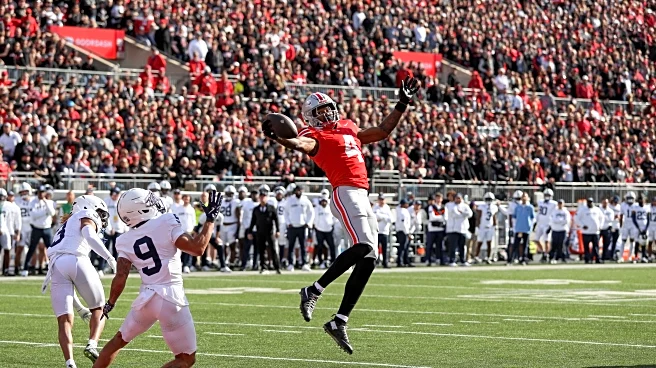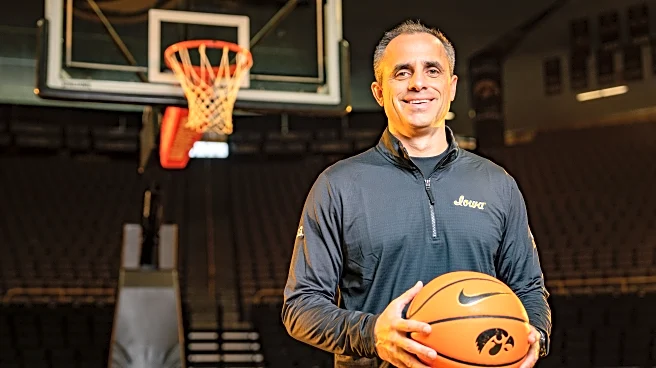The Ducks have completed 8 of their 12 regular season games, 7 against FBS competition (insert your own jokes about the OSU’s here…). After the first five games I broke down performance metrics for the team
at that time. With three additional games against Big Ten competition, I will take another snap shot of team performance. I also have a chance to dive further into individual player performances, as I now have sufficient data for most of the starters.
Offense
Explosiveness in the run game has shown improvement in recent weeks, in line with what hyth’s model would anticipate with the transfer effect on the offensive line over the course of the season. Efficiency issues in the passing game due to protection breakdowns continue to be an issue. Also bringing down the passing numbers are perimeter screen passes. Drop back passing alone is performing at 52.08% efficiency, 23.61% explosiveness, and 9.34 adjusted yards per play.
Quarterback #5 Dante Moore’s error rate has ticked up a bit since the previous breakdown to about 16.47%. This reflects the coaching issues from the Indiana game, and simply playing more capable defenses in both Indiana and Wisconsin since the previous bye. We will have to wait and see how both Moore and OC Will Stein learn and adapt as the regular season enters it’s home stretch. The biggest change at quarterback is the backup. When Moore was injured against Wisconsin Eugene native #12 Brock Thomas came on in relief rather than veteran reserve #16 Austin Novosad.
In Big Ten play the primary wide receivers have been #1 Dak. Moore, #2 Bryant, and #4 Benson. All have above average efficiency as targets, with terrific explosiveness and yards per target. Bryant’s explosiveness is dragged down due to frequently getting the ball on failed perimeter screen passes. Both tight ends have excellent numbers as well, though they would indicate that Ja. Johnson should be targeted more often even if he takes some of those passes from Sadiq. The running backs low yards per target numbers are typical as they are usually taking checkdowns and having to improvise. Limar has been out with injury the past couple of weeks against the stronger defenses the team has faced, but he’s been the most productive of the backs through the air. The fourth primary running back, #23 D. Hill, has too few targets in the passing game to include here.
Whittington was dealing with injury issues early in the season, but has since become the most used back, typically in 11 or 12 personnel. His explosiveness rate has benefited from the games against Rutgers and Wisconsin where the offensive line’s blocking grades have improved. Limar got the most carries early in the season and has developed into a reliable option, but has been hurt the past few weeks. Hill is the home run hitter and often deployed in 21 personnel with Davison, but his numbers are buoyed by big plays against non-conference opponents. With Limar out Davison has seen more use as a single set back as opposed to early in the season when he was mainly the short yardage specialist. As I remarked in my Wisconsin review, I think he has developed into the best back when the blocking isn’t perfect as his size and short area agility give him a chance to make opponents miss.
The only lineman who has been performing to vintage Oregon standards is Pregnon at left guard. The athletic and developmental limitations on the tackles, Harkey and World, have been well documented. I have doubts their ceiling this year is much higher than what we have seen so far, though I should say World has shown noticeable improvement over the past three games. The two returners, Laloulu at center and Iuli at right guard, do not grade out well but it is difficult to say exactly how much of that is the transfer effect and how much is due to internal development (or lack thereof). Iuli lost quite a bit of time last year due to a foot injury and may not be back on his full pace developmental track until next season (assuming he stays healthy).

The above chart shows the pass and run error rates for the entire offensive line each week against FBS competition. The error rates generally follow hythloday’s logistic regression model. An exception is Week 2 against Oklahoma State but this has a simple explanation: Oklahoma State’s 2025 football team is not good. The pass error rate also ticked up momentarily against Indiana in Week 7, which relates to a game plan that led to QB Dante Moore holding onto the ball too long. There is potential for a slight decline in error rates over the next two weeks, but by the time the Ducks play USC and Washington it will probably be as low as can be expected for this year. Blocking from the tight ends is also negatively affecting the run game. Both Ja. Johnson and Sadiq have run blocking error rates over 30%. Poor performance blocking in space among the TEs and WRs are the biggest issue with the perimeter screen game.
Defense
Oregon’s defense has been excellent against the pass all year, and has also performed at a championship level with respect to explosive plays and average yards per play of all kinds. The mint front defensive scheme makes a conscious choice to sacrifice some rush efficiency defense for gains in other categories. Even still, a rush efficiency defensive rate of between 55%-60% would be needed for this defense to be considered elite. Curiously, Oregon has actually played a number of teams (Indiana and Rutgers, chiefly) that heavily rely on the passing game to move the ball. Their next few opponents (Iowa, Minnesota, and USC) all more heavily emphasize the run game. Whether DC Tosh Lupoi’s unit adjusts with heavier personnel or more 1-high alignments remains to be seen.
For every rush play the defense faces I give positive grades for players who affect the offense’s ability to succeed. This could be defeating a block, getting backfield penetration, helping out on the tackle, forcing the runner to redirect into other defenders, etc. Negative grades are assigned if a defender does not complete their assignment and that failure helps the play succeed. This includes getting moved by a double team, getting stuck on a block, playing the wrong gap assignment, missing a tackle, etc. The ratio shown in the chart above is the % of all grades that are negative, computed as: negatives/(positives + negatives).
The starting LoS scrimmage defenders have regularly consisted of Uiagalelei, Alexander, Washington, and Tuioti. All have grades that are comparable or better than the starters last year. Tuioti in particular has shown improved speed and agility and has been very effective setting the edge. The backup DTs are performing well below the starters. While their grades aren’t catastrophic, it would be helpful if experience could improve their performance as the season continues to help avoid fatigue issues late in games.
Purchase sometimes rotates in as an edge defender in relief of Tuioti or Uiagalelei, but usually sees the field as an extra linebacker in 3-4 personnel against heavy packages from the offense. Surprisingly he’s been asked to play off ball as often as an edge defender on the LoS, a departure from his use in past seasons. He grades out well, but that comes with the caveat of small sample size. DT #42 A. Breland has only been used as a pass rush specialist, and bigger edge defender #29 A. Porter has also only seen the field sparingly. I don’t have enough grades on my tally sheet to include either in the table above. It’s possible Porter will see more time on the field against run heavy offenses, but he didn’t see the field against Wisconsin even with the game being played in bad weather.
The biggest weakness in rush defense comes from the linebackers. Boettcher and Mixon are comparable as a duo to Boettcher and Bassa last year. The linebackers weren’t the strength of the defense in 2024, though. The biggest issue has been that Jackson not only hasn’t improved as a third year player, he has regressed significantly coming off an off season injury. Of the highly touted redshirt freshman on the squad, only #20 D. Williams has been healthy enough to see the field but then only in garbage time. Unless Williams gets into shape for significant minutes Jackson will continue to be part of the primary rotation.
In terms of pass defense, the linebackers haven’t given up a lot of big plays but that is usually because they are defending shorter routes. Neither Boettcher nor Mixon grade out as well in pass defense as Bassa did, but both are above water. Jackson’s pass defense has also regressed, his error ratio in pass defense is 66.67%. Uiagalelei and Tuioti have even better havoc numbers as edge rushers than last season. On the interior both Alexander and Washington have been an asset rushing the passer, but neither has fully replaced the havoc DT Derrick Harmon produced in 2024.
Oregon’s pass defense has actually been better in 3rd and short than in 3rd and long, indicating both the pass rush and secondary have succeeded in shutting down the oppositions passing game. Only Indiana found success through the air, but even then the Ducks held them below the numbers the Hoosiers have found against most of their other opponents. The biggest coups for the pass defense this year was shutting down Rutgers talented receiving corps between the 20s, a result hythloday categorized as the greatest defensive success in Big Ten play so far this season.
The corners have generally been a three man rotation between Finney, Johnson, and Obidegwu, with a few snaps taken by #3 S. Laulea. Flowers has been the consistent starter at boundary safety (backed up by #2 K. Lopa) while transfer Canady has taken the starting role at nickel/star safety (backed up by #0 D. Austin). Primarily used at field safety, Thieneman has rarely left the field. Oregon has also used a defensive alignment that puts a safety only 10 yards from the L0S in the middle of the field behind the linebackers but in front of two deeper players in a 2-high shell. Typically the Ducks have played 5 DBs and Thieneman takes this role while the nickel (Canady or Austin) rotates to the deep field safety spot. In heavier packages Thieneman stays at field safety and Boettcher occupies this “strong safety” spot.
In hythloday’s words, Finney is “the truth” despite being a true freshman. Obidegwu’s performance is much more typical for a redshirt freshman, though his upside remains high. Johnson’s veteran savvy shows up in his per target numbers, but he’s also given up too many big plays.
In rush defense Canady has done the best of the safeties (though his role is quite different as he plays from depth less often), while Flowers is doing a bit better than Thieneman on my tally sheet. Canady has been tested frequently in coverage, but as a Duck he is treading water in efficiency and not giving up many big gains. Flowers has also done well against deep passes. If a team is looking for a big play against this Oregon secondary, attacking Thieneman in deep zone coverage has so far been the best option. Against Wisconsin Thieneman played more man coverage and did quite well. How often he is used this way going forward will be something to watch for in the regular season’s home stretch.
